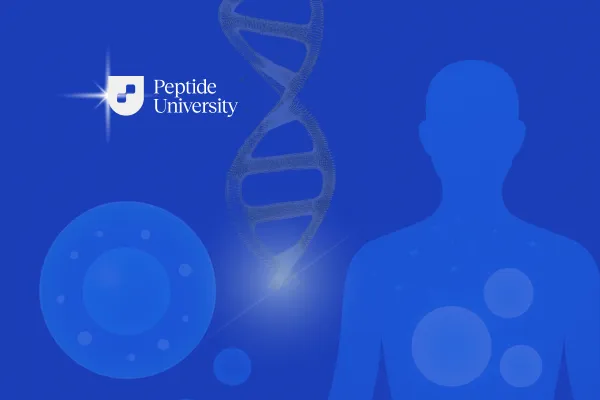
The Missing Link in Complex Chronic Illness: Mastering Mast Cell Activation with Peptide Therapy
For many clinicians working on the frontlines of chronic, complex illness, it can feel like chasing shadows: multi-system symptoms, inconsistent lab findings, and patients who continue to struggle despite targeted interventions.
Yet time and again, one common thread emerges among these patients — Mast Cell Activation Syndrome (MCAS).
In her Mast Cell Activation Masterclass, Dr. Nafysa Parpia shares her expertise on recognizing, diagnosing, and treating this often-overlooked condition. She also reveals how peptide therapy has transformed her approach, helping patients achieve faster, more sustainable improvements.
What Is Mast Cell Activation Syndrome?
Mast cells are among the oldest and most critical cells in the human immune system, serving as vigilant “guards” against allergens, pathogens, and environmental toxins. In a healthy state, mast cells release inflammatory mediators only when needed, and only for as long as needed, before returning to baseline.
But in MCAS, the threat never seems to end.
Patients with MCAS live in a perpetual state of mast cell overactivation — leading to a constant release of histamine and other inflammatory chemicals. This drives an ongoing, multi-system inflammatory response.
As Dr. Nafysa explains, MCAS is more than just a symptom of another condition — it’s a secondary illness in its own right, often perpetuated by multiple underlying root causes.
The Immune Paradox
One of the most confounding aspects of MCAS is what Dr. Nafysa calls the immune paradox:
On one hand, these patients exhibit an overactive immune system, manifesting as autoimmunity and mast cell overactivation.
On the other, they also have a weakened immune system, leaving them vulnerable to chronic infections and poor pathogen clearance.
This contradictory immune profile makes treatment challenging — and highlights the need for therapies that can restore balance rather than simply suppress symptoms.
Why Peptide Therapy Works
Before integrating peptides into her protocols, Dr. Nafysa relied on a variety of mast cell stabilizers, antihistamines, and other agents — which worked, but often took longer and delivered inconsistent results.
By adding peptides, she was able to help patients:
✅ Calm mast cell hyperactivity
✅ Support immune resilience
✅ Reduce multi-system inflammation
✅ Accelerate progress toward stabilization
In her clinical experience, peptide therapy “actually works better than anything else I’ve used” to modulate mast cell activity and help patients regain function sooner.
Diagnosing MCAS Clinically
One of the key challenges in MCAS is that there is no single laboratory test to confirm the diagnosis.
Instead, clinicians must rely on a careful clinical assessment.
Dr. Nafysa uses three criteria to identify MCAS:
🔷 The patient presents with multiple symptoms affecting multiple systems.
🔷 Symptoms tend to wax and wane over time.
🔷 Symptoms improve noticeably with mast cell stabilizers or antihistamines.
For many patients, this clinical insight — paired with the right therapeutic strategy — is the breakthrough they’ve been waiting for.
Learn From the Expert
If you’re a clinician working with complex, chronically ill patients, understanding how to identify and address MCAS is essential.
And if you want to learn how to integrate peptide therapy into your protocols for faster, more effective results — this masterclass is for you.
🎓 Access Dr. Nafysa Parpia’s full Mast Cell Activation Masterclass today at MyPeptideUniversity.com.
Because your patients deserve more than symptom management — they deserve restoration.
Peptide University — Learn Today. Lead Tomorrow.
#MCAS #MastCellActivation #PeptideTherapy #ClinicalEducation #RegenerativeMedicine #ChronicIllness #ClinicalExcellence #MyPeptideUniversity


